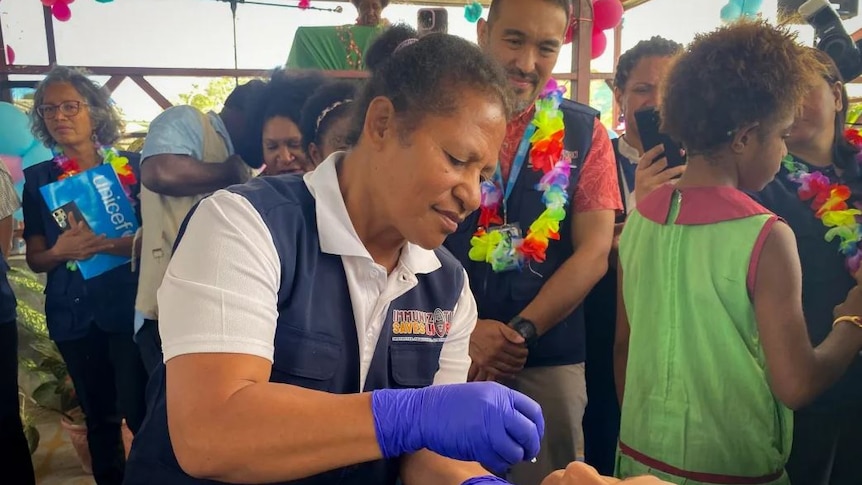More than 31 cases of polio have been detected in Papua New Guinea since the disease re-emerged earlier this year.
The World Health Organisation (WHO) confirmed the numbers on Monday, as PNG launched a national immunisation campaign in Port Moresby.
An outbreak was declared in May after two children were confirmed to have the virus.
Polio, also known as poliomyelitis, is a highly infectious disease that primarily affects children under the age of five. It can also affect older age groups.
Most people who have it have no symptoms, but it can lead to irreversible paralysis in about one in 200 infections, or 1 per cent of cases.
The virus is spread by person-to-person contact or the ingestion of contaminated virus from faeces.
Because the virus multiplies in the gut of infected people, who then shed it in their stool for several weeks, it can spread through a community, particularly in areas with poor sanitation.
The WHO said over 31 detections of the virus had been confirmed in Papua New Guinea through environmental and community surveillance since May.
While no cases of paralysis had been reported, the risk of further transmission remained high due to low immunisation rates and poor access to children who lived in remote areas.
The WHO said the vaccine campaign would focus on the mainland provinces, of which 17 had been identified as high-risk areas. Here, both the oral polio vaccine and the polio vaccine jab were due to be administered.
The New Guinea Islands provinces had been deemed lower-risk, and one round of the polio vaccine injection was planned.
“This moment represents more than just a public health initiative — it is a bold step forward in our shared mission to secure the health and future of Papua New Guinea’s youngest generation,” WHO PNG representative Dr Masahiro Zakoji said.
A baby receives polio vaccine in PNG.(Supplied: WHO Papua New Guinea)
Last year, UNICEF highlighted Papua New Guinea’s low childhood immunisation coverage.
It found that only about 50 per cent of children born each year received “essential life-saving vaccines”, which included the oral polio vaccine. That left about 120,000 children unvaccinated each year, the agency said.
It said to prevent outbreaks and reach herd immunity against polio, vaccine coverage should be at least 95 per cent.
The agency said that while the global prevalence of the disease had plummeted by more than 99 per cent in the past 35 years, millions of children were still affected because they missed out on the vaccine.
Most of these children (85 per cent) were living in “fragile settings”, UNICEF said. These included countries and communities where there was conflict, natural disasters and humanitarian crises.
In 2000, Papua New Guinea was declared polio-free, but 18 years later, an outbreak of vaccine-derived polio type 1 was declared. It resulted in 26 cases across nine provinces in 2018.
The WHO said the 2018 Papua New Guinea outbreak was brought under control through further rounds of vaccination, community engagement and better surveillance of the disease.
Meanwhile, the current outbreak is related to vaccine-derived poliovirus type 2.
In May, Papua New Guinea’s health department said the strain was a “rare form of the virus that can emerge in under-immunised communities but is well understood and can be effectively controlled through vaccination”.
RNZ

